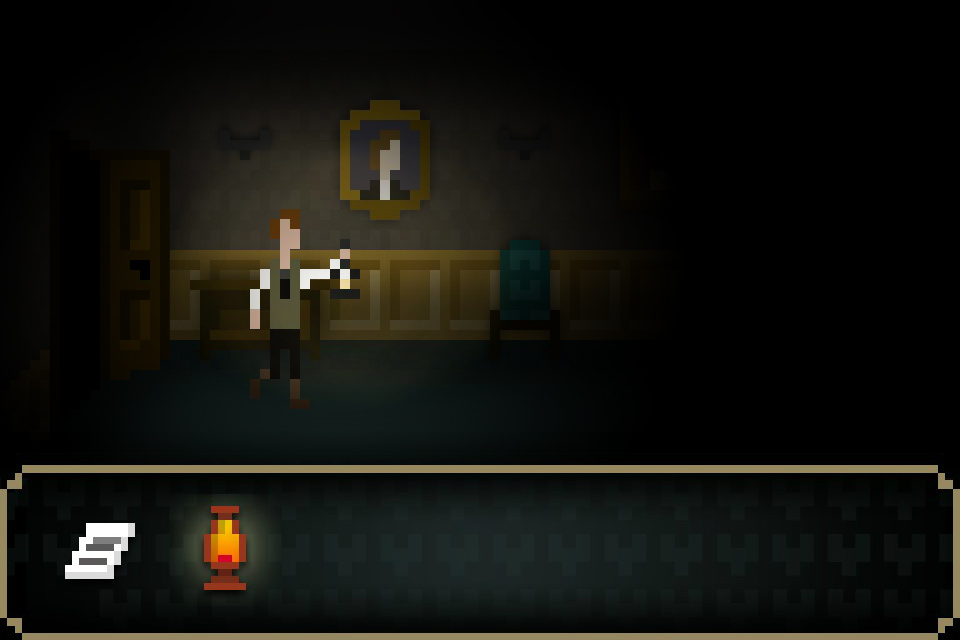"Headphones and dark environment recommended."
That was the first sentence that greeted me after the loading screen. Being a gamer who loves getting the fullest experience possible, I promptly turned off the lights in my dorm room and untangled my earbuds. Now prepared, I noticed the accessibility options displayed under the first message. Due to the retro graphics of the game, the default font used for the text is pixel-heavy and can be difficult to read. Aside from the expected full-screen option and the option to have sounds described in text was an option which I did not expect: to better accommodate players, the developers added an option that allows players to switch to a "dyslexia-friendly" font. After showing this option to a few friends who actually have dyslexia, they told me that while both fonts are readable without much issue, the dyslexia-friendly font was notably easier to read.
The actual game begins without much instruction or information. You find yourself standing in an attic with little option other than to scan the room for things to click on. First, a length of rope. Then a chair. Then the rafters. It doesn't take long to figure out where this is headed. After this confusing though rather interesting opening scene, we are taken to the home of our protagonist, one J. Devitt. After receiving a strange letter from an old school friend of his, he heads to his friend's home to investigate. From here, the real game begins.
Gameplay is simple, as one would expect from a point-and-click game. The mouse is used for everything from moving around to investigating the environment to gathering items. Despite its minimalist graphics, it's relatively easy to tell what everything is. As with most games of this genre, you explore your environment, gather various items and combine and use those items to solve puzzles. For example, the upstairs of the manor is too dark to explore, so you have to find an oil lamp and a box of matches to light it. The game is easy to play and encourages thorough searching. Various notes and diary pages scattered throughout the manor give slight hints as to what was happening before it became deserted, though they do not give nearly enough information to reveal the full story. The game's narrative sucks you in from the very start and doesn't let go.
The pitfalls are few and far between. There were a few times I found myself searching rooms multiple times in order to find an object that would allow me to progress. With the graphics the game uses, it can be hard to differentiate between two different objects when they're close together. The only other thing I can complain about is that the sudden white light that came from my screen whenever I picked up a note was a bit blinding compared to the dim color palette used throughout the rest of the game.
All in all, "The Last Door" is an intriguing game that offers an interesting story in an ominous environment. The ambient noises, background music and pixel-intensive graphics all combine to create a unique atmosphere. By the end of the first chapter, I was overcome with an urge to play through every other available episode, despite it being 4 a.m. "The Last Door" is an engrossing mystery game that leaves the player wanting more.
The developers of "The Last Door" are currently looking for donations. By donating more, you can unlock more rewards, which range from unlocking the newest chapter to getting a pixelated version of yourself added to the Hall of Fame. By supporting the project, you help them to create more chapters and further the development of the story. You candonate to "The Last Door" here.








